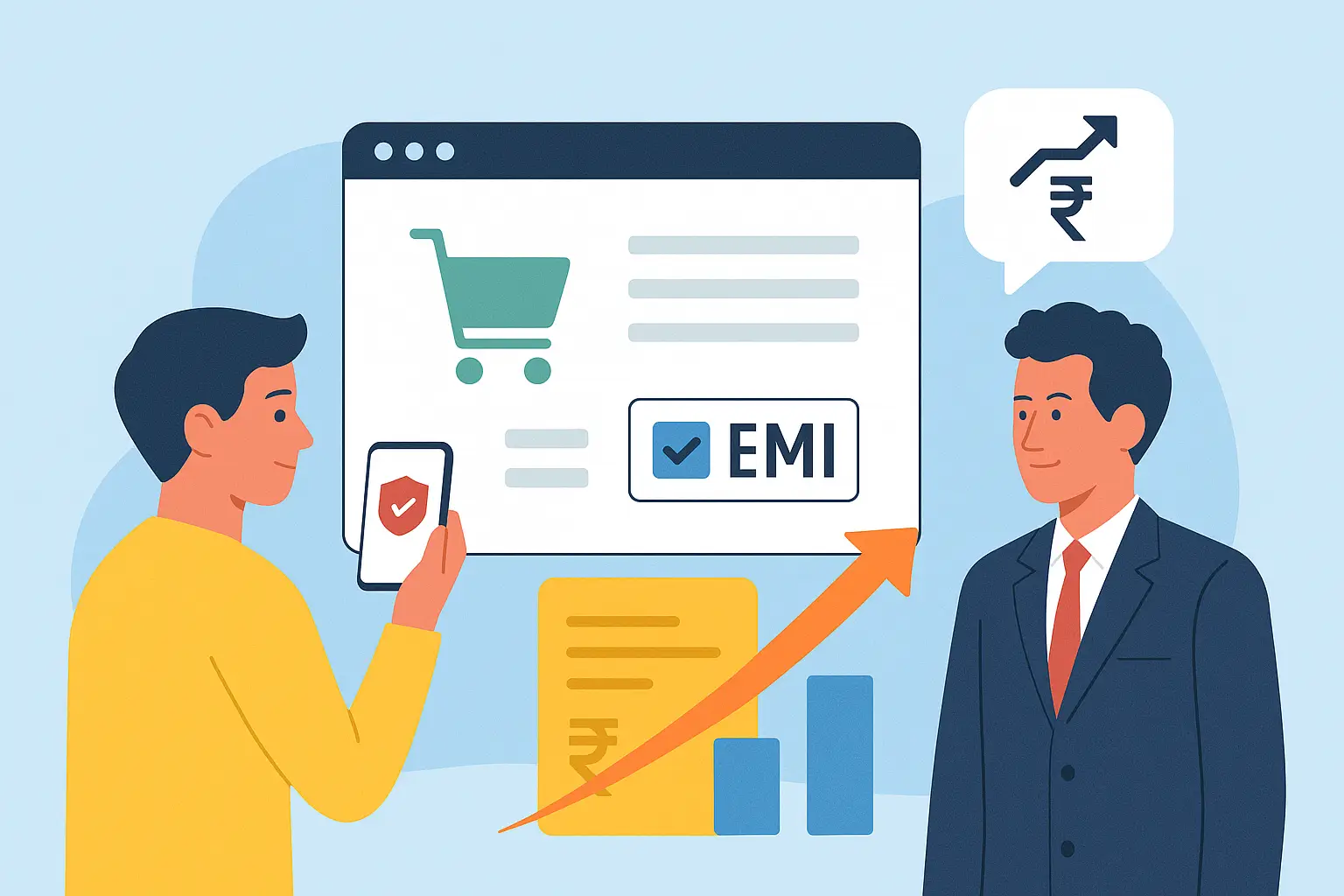How to Increase Average Order Value Using Secure EMI
💡 Introduction
Increase Average Order Value Using EMI is a powerful strategy merchants can use to uplift sales without discounting margins. By offering flexible installment plans, businesses empower customers to buy higher-ticket items confidently. Secure EMI, a merchant‑funded platform supporting UPI Autopay and NACH, enables small and medium enterprises (SMEs), D2C brands, and all merchant types to seamlessly introduce EMI options—boosting conversions and average order value (AOV) securely and efficiently.

Why EMI Matters for AOV Growth 💰
Traditional large-ticket purchases often scare off customers who can’t pay upfront. EMI solves this: by splitting costs into manageable installments, you remove this purchasing barrier. When paired with easy collection through UPI Autopay or NACH, you provide a frictionless buying experience—encouraging customers to opt for premium products, add-ons, or larger cart sizes.
Increase Average Order Value Using EMI through Customer Confidence
Customers feel comfortable adding more to their cart when they can pay in smaller monthly amounts. The psychological barrier of bulk payment disappears, gradually lifting the AOV.
Increase Average Order Value Using EMI with UPI Autopay & NACH
UPI Autopay and NACH-based EMI collections automate recurring deductions—secure, RBI-compliant, and user-approved. This automation minimizes failed payments, reducing revenue leakage and ensuring consistent cashflow for merchants.
Increase Average Order Value Using EMI by Structuring Flexible Installments
Offer customized EMI plans—3, 6, 9, or 12 months—tailored to price brackets and customer segments. Flexible options increase the likelihood of cart expansion, as buyers often upgrade products when repayments feel manageable.
Benefits of Offering EMI Plans via Secure EMI
- Higher Average Order Value: EMI makes premium products accessible.
- Boosted Conversion Rates: More customers complete checkout.
- Seamless Automated Collections: UPI Autopay and NACH ensure timely EMI deductions.
- Secure and RBI‑Compliant: Built on NPCI infrastructure, rated safe and reliable.
- Simple Merchant‑Funded Model: No need for banks or credit cards; funds come directly from merchants.
- Full EMI Lifecycle Management: From KYC to settlement, all handled on one platform.
How Secure EMI Works 🛠️
Step 1 – Plan Setup
Merchant logs in to the Secure EMI dashboard, selects an EMI duration (e.g., 6 months), and sets terms (e.g., 0% or merchant‑bears interest).
Step 2 – Customer Authorization
At checkout, customers choose EMI. They authenticate via UPI Autopay or NACH e-mandate—fully RBI-approved.
Step 3 – Automated Recurring Payments
Secure EMI triggers monthly payments automatically. UPI Autopay confirms success instantly; NACH handles non‑UPI customers.
Step 4 – Merchant Settlement
Once each EMI installment completes, funds settle into the merchant’s account minus any agreed platform fee.
Step 5 – Reporting & Reconciliation
Merchants access full dashboards showing EMI plan statuses, receivables, payment schedules, and collection rates.
Offering EMI at checkout isn’t just a payment feature—it’s a growth strategy. By letting customers split payments, businesses increase order values, boost conversions, and make premium offerings more accessible.
Real‑World Use Cases
1. Home Appliances D2C Store
A mid-size D2C brand selling appliances started offering 9-month EMI with UPI Autopay. Customers added extra items like installation kits and accessories—AOV rose by 22%+.
2. Furniture Merchant (Tier‑2 City)
By integrating Secure EMI’s NACH‑based EMI, the furniture seller enabled non‑UPI customers to pay in easy installments. Result: AOV jump from ₹12,000 to ₹15,500 and reduced cart abandonment by 17%.
3. Gym & Fitness Equipment Retailer
Merchants offering EMS equipment saw customers choosing bundled packages—due to simple EMI plans, average transaction value increased substantially.
FAQ
Q1: Does EMI increase customer drop‑off?
A:No, EMI typically reduces drop‑off. Offering payment flexibility wins more conversions than upfront pricing—especially for larger purchases.
Q2: Is UPI Autopay mandatory?
A: No. UPI Autopay is convenient but NACH is fully supported—ideal for customers without UPI apps.
Q3: Are there hidden charges for merchants?
A: Secure EMI has transparent transaction fees. No hidden bank charges, credit card fees, or integration costs.
Q4: Can small businesses use this?
A: Absolutely. The merchant‑funded model is ideal for small and medium businesses or D2C brands without needing bank partnerships.
5. Can I customize EMI plans?
Why Choose Secure EMI to Increase AOV
- Complete EMI Lifecycle, end‑to‑end
- Automation + RBI Compliance with UPI Autopay/NACH
- No third‑party bank dependencies
- Dashboard visibility on performance, settlements, and overdue tracking
🎯 Conclusion & CTA
Start unlocking higher average order value using EMI today. Secure EMI equips your business with secure, compliant, automated installment options—empowering customers to spend more confidently. Ready to grow revenue and conversions?
👉 Contact Secure EMI now at secureemi.com to get started or request a demo tailored to your business goals.

Leave a Comment